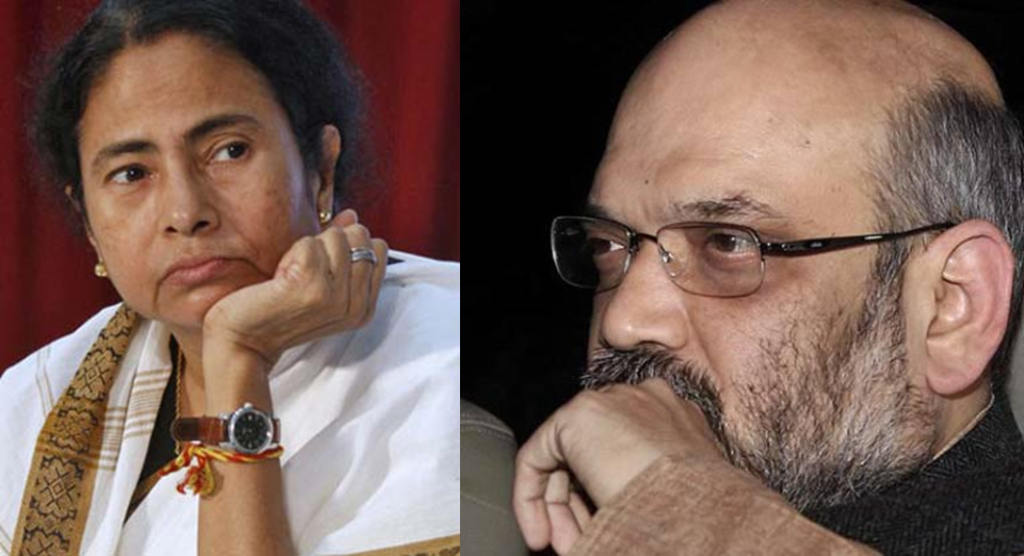Addressing a press conference during his trip to Bengal, BJP president Amit Shah admitted that when the Left was thrown out after three decades of government in 2011, many had believed that a just and development-oriented regime had taken its place. Bengal is disillusioned today, for the much touted ‘poriborton’ is a mere extension of leftist misrule, if not worse.
The only difference this time around lies in the fact that the BJP believes it doesn’t need three decades to oust the TMC government.
On the ground, both the Left and the TMC regimes might come across as being alike to one another, but the TMC lacks both leftist survival tactics and a conducive environment. Unlike the average communist cadre who possesses an ideological inkling irrespective of how despicable an ideology it may be, the average TMC cadre is a trigger-happy sycophant. The TMC’s influence over the media and the intelligentsia cannot be compared to the communists, who’s bluffs the so-called opinion-making classes never called. More importantly, after the advent of social media, the state administration cannot systematically hide unpleasant situations from public glare. How information about communal riots surfaces despite the administration’s efforts to suppress its flow, is a testament of the social media effect.
What this essentially means is that unlike the instances of booth-capturing or the sixty-thousand political murders which went unnoticed during the communist rule, people in Bengal are well-aware of the hellhole they inhabit. Whether it is the chit-funds connected to senior TMC leaders that have duped millions of poor Bengalis by taking away their hard-earned life savings, or whether it is the sting operation which shows the TMC top brass (MPs and ministers) accepting thick bundles of cash, corruption in the highest echelons of the party isn’t missed by anyone.
The other aspect- the communal aspect- is beginning to take a toll on the average Bengali. Illegal immigrants from Bangladesh belonging to the minority community have flooded the state unchecked, and it is believed that they might have altered the state’s demographics substantially. The district of Malda, which borders Bangladesh, has turned into a hub for fake currency and illegal weapons, proving how stark a threat to national security the influx of illegal immigrants has been. Radicalization is also spreading fast, like it does whenever the minority community’s dominance is on the rise. Certain pockets in the state can be equated to sharia zones, meaning they are a law unto themselves. Special schemes offering scholarships, land and grants to the minority community are being implemented by the state government. Moreover, restrictions are often imposed on the majority community. The state government has attempted to ban festivals and even alter words to undermine the Hindus.
In the recently concluded by-poll of the Kanthi Dakshin assembly constituency, the BJP emerged a strong second. It isn’t surprising that the ruling TMC won the elections, but the BJP’s emergence has enthused its cadres and made the TMC jittery. One year ago, the BJP’s vote-share in the same constituency was a meagre 8.75%. In one year, it has risen by a whopping 22%, placing it at around 31%. This was not enough to win the seat in question, but the growth trajectory is what gives the BJP’s opponents sleepless nights. The communists, who came second in the same constituency one year ago with a vote-shar of 34%, have been reduced to 10%. Due to the historical and the communal factors, it is increasingly clear that the communists will be relegated to third position if elections were held in Bengal today. Their alliance with the Congress Party doesn’t do them any favors either. The imagery of a tired runner carrying a dying runner across the finishing line comes to mind.
The reason for BJP’s meteoric rise is the phenomenon of Hindu consolidation. The state government’s policy of appeasing the minority community coupled with suppressing the majority community, was bound to lead to a Hindu resurgence of sorts in the state. It is this wave that the BJP is riding currently, and this wave will only swell further. Hindu activists such as Tapan Ghosh mobilizing lakhs of co-religionists to fight for their rights despite the dangers they face, and the RSS grabbing every opportunity highlight Indian culture and receiving an excellent response, are indications of the times to come. Mamata Banerjee is rattled to the point where she has made statements such as, “I am a real Hindu.” But with her actions proving otherwise, Hindu consolidation will benefit only the BJP.
If there’s one man who realizes the political importance of Hindu consolidation, it is Amit Shah.
Having conquered the state of Uttar Pradesh not once but twice for his party, Amit Shah understands exactly how potent the phenomenon is. While the regional players in Uttar Pradesh won elections based on a Dalit-Muslim combination or a Yadav-Muslim combination, Shah took the game to the next level. Refusing to make distinctions between castes and sub-castes, the BJP has focused on how the majority community is often made to feel like second-class citizens in their own country. Not only have they reaped rich political dividend, the scale of their victories has been unprecedented.
Amit Shah’s trip to West Bengal was symbolic in many respects.Addressing the cadre at the footsteps of a Ganesh temple right after offering his prayers, or going door to door in Mamata Banerjee’s constituency to spread his message, Amit Shah has thrown the gauntlet. Shah’s political acumen is unparalleled. The strategic depth he brings to the table, coupled with perfect organizational skills to run a high-voltage campaign, will be witnessed in Bengal too. The master seems to have spotted an opening . . . will he prevail?
